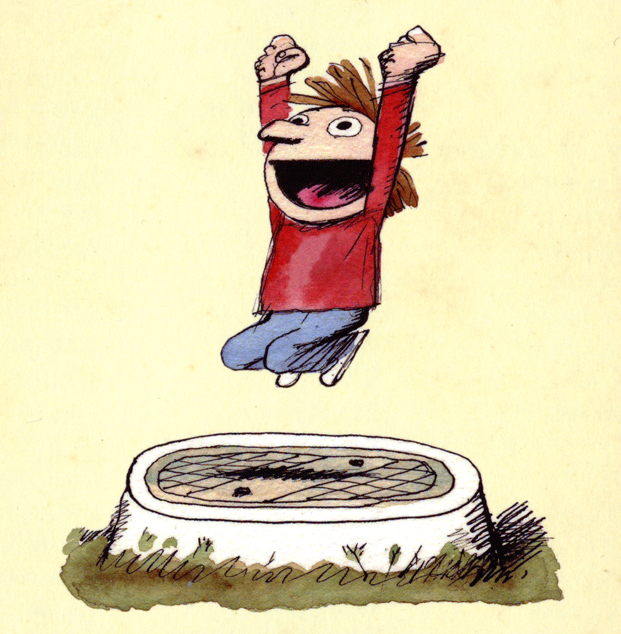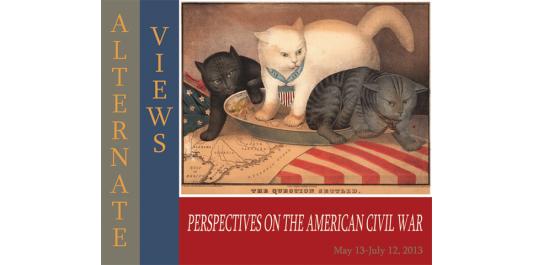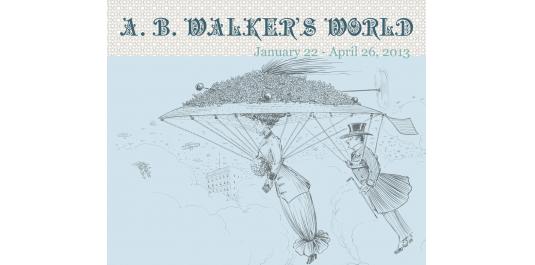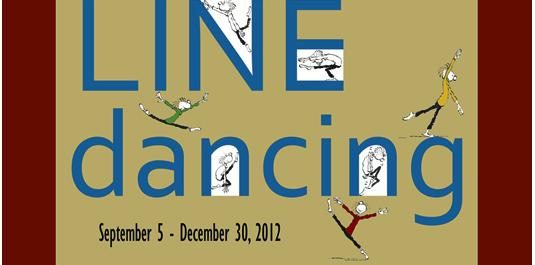Past Exhibits
 The Irresistible Force Meets the Immovable Object: A Richard Thompson Retrospective March 22, 2014 - August 3, 2014
The Irresistible Force Meets the Immovable Object: A Richard Thompson Retrospective March 22, 2014 - August 3, 2014 Image © Richard Thompson.
Richard Thompson, the 2011 winner of the Reuben Award for “Outstanding Cartoonist of the Year,” will be featured in the exhibition, The Irresistible Force Meets the Immovable Object: A Richard Thompson Retrospective. This exhibit, curated by Caitlin McGurk, will not only include gorgeously hand-watercolored Sunday originals and black-and-white dailies from Thompson’s popular comic strip Cul de Sac, but will celebrate his lesser-known abilities as a master of caricature, gags, and editorial cartoons— both as cartoonist and painter.
 Substance and Shadow: The Art of the Cartoon November 16, 2013 - March 2, 2014
Substance and Shadow: The Art of the Cartoon November 16, 2013 - March 2, 2014 Substance and Shadow refers to the dual meaning of John Leech’s “Cartoon, No. 1,” but also describes the essence of cartoon art in general. Cartoons are substance and shadow, content and technique. Cartoonists communicate their ideas graphically with bold lines and subtle shading.
A cartoon is a combination of words and pictures that can tell a story, share a thought, articulate an emotion, promote a point of view, or make people laugh. Cartoonists have mastered an almost limitless vocabulary of graphic expression to entertain and enlighten a mass audience. In spite of the popularity of cartoons, the creative process that cartoonists use to conceive and produce their art still remains a mystery to most of the general public.
This exhibition showcases original art from the collection of the Billy Ireland Cartoon Library & Museum which dramatically reveals the various elements, methods, tools and techniques that cartoonists utilize, including caricature, character design, sequential panels, speech balloons page, layout, animation and storytelling.
 Alternate Views: Perspectives on the American Civil War May 13, 2013 - July 12, 2013
Alternate Views: Perspectives on the American Civil War May 13, 2013 - July 12, 2013 The 150th Anniversary of the American Civil War is commemorated in this exhibition which highlights the Billy Ireland Cartoon Library & Museum’s growing collection of nineteenth century prints. Editorial cartoons were not published in newspapers until after the Civil War when technology made it possible to publish them economically in a timely way. Prior to that, broadsheet prints – etchings, engravings and lithographs – were the means cartoonists used for political commentary. Popular magazines such as Harper’s Weekly relied on wood engravings to provide illustrations.
 A. B. Walker's World January 22, 2013 - April 26, 2013
A. B. Walker's World January 22, 2013 - April 26, 2013 Alanson Burton Walker was a very successful magazine cartoonist working at the beginning of 20th century. His work was much in demand and he drew for all the important magazines of the time–Life, Harper’s, Atlantic Monthly, Saturday Evening Post, Judge and Collier’s–where he created gentle, wry cartoons on issues of the day.
 Line Dancing September 5, 2012 - December 30, 2012
Line Dancing September 5, 2012 - December 30, 2012 Line Dancing surveys dance in cartoon art to celebrate the renovation of Sullivant Hall, the future home of both the Department of Dance and the Billy Ireland Cartoon Library & Museum. From a 1788 print of A Cotillion – the precursor to the American square dance – to modern works like a Jules Feiffer dancer and a jig from Charles Schulz’ Snoopy, these figures dance across history and across the page. Be it a literal depiction of dance as an event in time or the symbol of dance as metaphor, the works in this exhibit are moving, just like our library!

